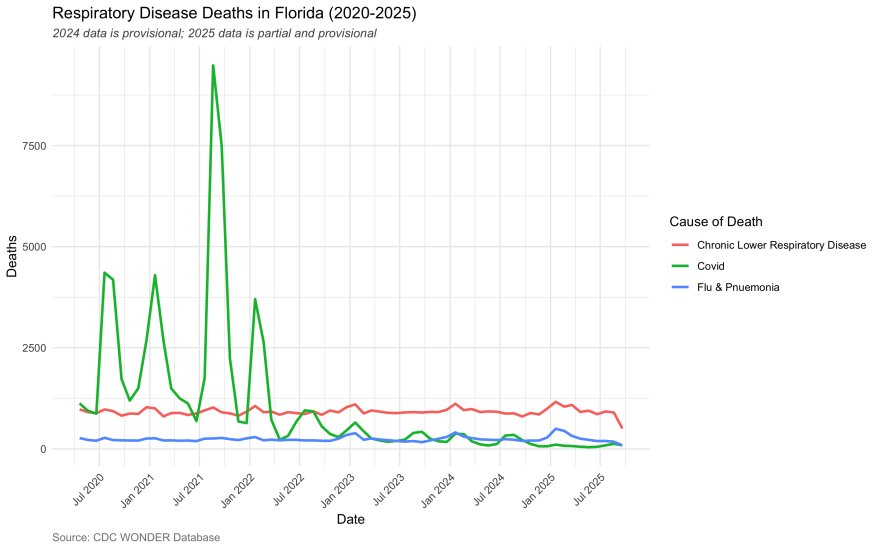In 2020, COVID-19 was the third highest cause of death in Florida, behind heart disease and cancer.
Now, the virus is no longer among the top 15, ranking behind influenza and pneumonia, as well as chronic lower respiratory diseases, according to data from the Centers for Disease Control and Prevention.

According to the Florida Department of Health, Florida posted its 100,000th death related to the disease this year.
Information on the department website says 2,298 deaths linked to the virus have been reported this year as of the end of last week.
Miami-Dade County leads with 205, followed by Broward with 159, Pinellas with 155, Palm Beach with 153, Hillsborough with 122, Polk with 119 and Orange with 111.
Dr. Mobeen Rathore, chief of the division of Pediatric Infectious Diseases and Immunology at University of Florida College of Medicine in Jacksonville, said the virus is still very young.
Unlike influenza, which has been around for over a century, COVID is almost 6 years old. However, during that time, treatments have become more effective at managing the virus.
“ We know from influenza that the virus every 10 years will change significantly,” Rathore said. “Every year is what we call a drift, and every 10 years or so, we call a shift, which is a major change. We don’t have that sort of information yet in terms of time-wise. Is COVID going to have a drift every year, every two years, every five years?”
The good news is that vaccination can provide cross-protection for variations that may arise, according to Rathore.
However, he also noted that herd immunity does not work as well for viruses like influenza and COVID due to their variations, which means that another potential severe outbreak cannot be dismissed.
Rathore also said it’s “conventional wisdom” that cases are underreported.
“ Everybody who dies of a respiratory disease may not have a diagnosis of a virus,” Rathore said. “So, yes, we do believe that these are probably underreported, both the morbidity and mortality for these infections.”
With the COVID-19 virus still relatively new, at least by medical standards, Rathore stressed the importance of ongoing research and surveillance by the medical community as patterns are tracked.





